January 1, 2019
As my year as Mountain View mayor and my four years on the Mountain View City Council draw to a close, I am proud of what our city has accomplished. I remain aware, however, that much more needs to be done to complete the projects that we have started. I am also proud of my personal contribution, but I recognize that nothing could have been achieved without the cooperation of other council members, the hard work and expertise of city staff, and the support of the lion’s share of Mountain View residents.
Serving as mayor is a daunting experience. Many people think that the mayor has the power to fix problems and set policy on his own. In reality, I was only one of seven votes. This year, I jested, “The mayor of Mountain View does four things. He signs documents; he has his picture taken with others. He chairs meetings. And occasionally he gives a speech.”
Each year I have prepared an annual report to constituents, but as I’m stepping down after losing re-election to the council, I have expanded this summary to cover the entire four years since Ken Rosenberg, Pat Showalter, and I took office. I recognize that it’s long, but to me it only covers a fraction of what we have undertaken and accomplished.
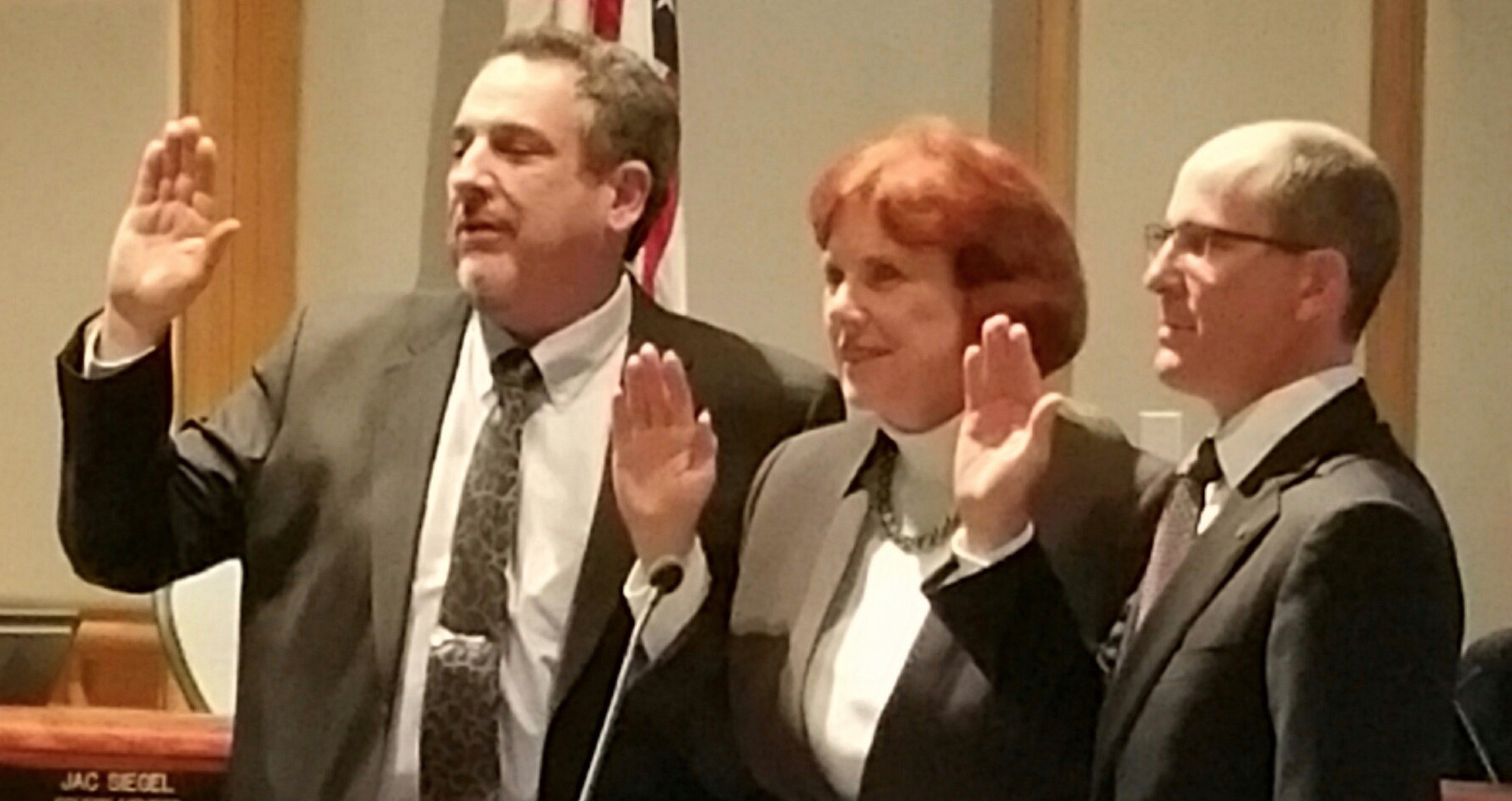
As most people know, the principal reason I decided to run for Council in 2014 was to get more housing built, and to ensure that a larger percentage of that housing would be subsidized for low and moderate income people. I have been pleased with the result. Last time I checked, since 2010 Mountain View has built, approved, or started review of over 8,200 housing units. In addition, our North Bayshore plan calls for 9,850 new homes, and we’re considering 5,000 units in East Whisman, 2,500 along Terra Bella, and 900 net new homes on the Army property at Moffett Boulevard and Middlefield. Of course, like Rome, not all these homes will be built in a day.
Aided by money from Mountain View’s Housing Fund, non-profit developers are building a steady stream of stand-alone affordable (subsidized) housing projects here. More important, now that state law allows it, we are insisting that new apartments include 15% below-market units, with a goal of 20% in areas such as North Bayshore. We are negotiating with developers to make moderate-income housing available, but we have not yet come up with proposals for shared-equity projects, such as community land trusts, to enable middle-income people to buy their first homes.
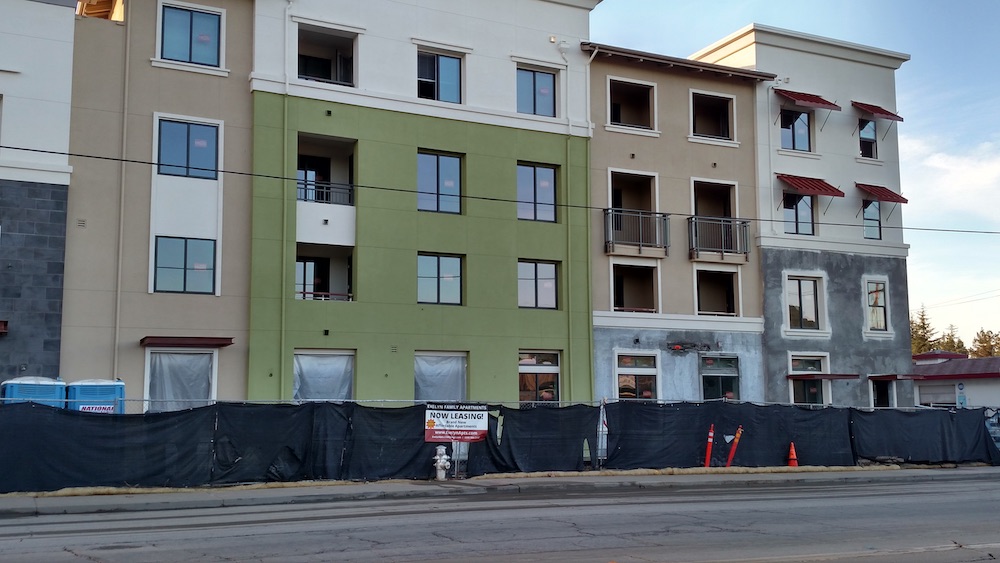
It’s significant that most of our new housing is planned for complete medium-density neighborhoods, with parks, schools, retail, transit, and jobs. This will give residents the opportunity to walk and bike to work, limit traffic, and reduce greenhouse gas emissions. I expect that many people will choose to live in such inherently vibrant neighborhoods. The blemish on our housing strategy is tear-downs. We have approved a slow stream of projects to replace older, naturally affordable apartments—buildings covered by rent control—with townhouses or other expensive ownership units. The Council majority’s vote in December, 2018 to approve the redevelopment of the Royal Viking apartments on Rock Street, displacing about twenty, predominantly Hispanic families, was heart breaking. See http://lennysiegel.users.sonic.net/web/blog/reports-to-constituents/disturbingcouncil-votes-to-approve-redevelopment-of-20-naturally-affordable-housing-units/.
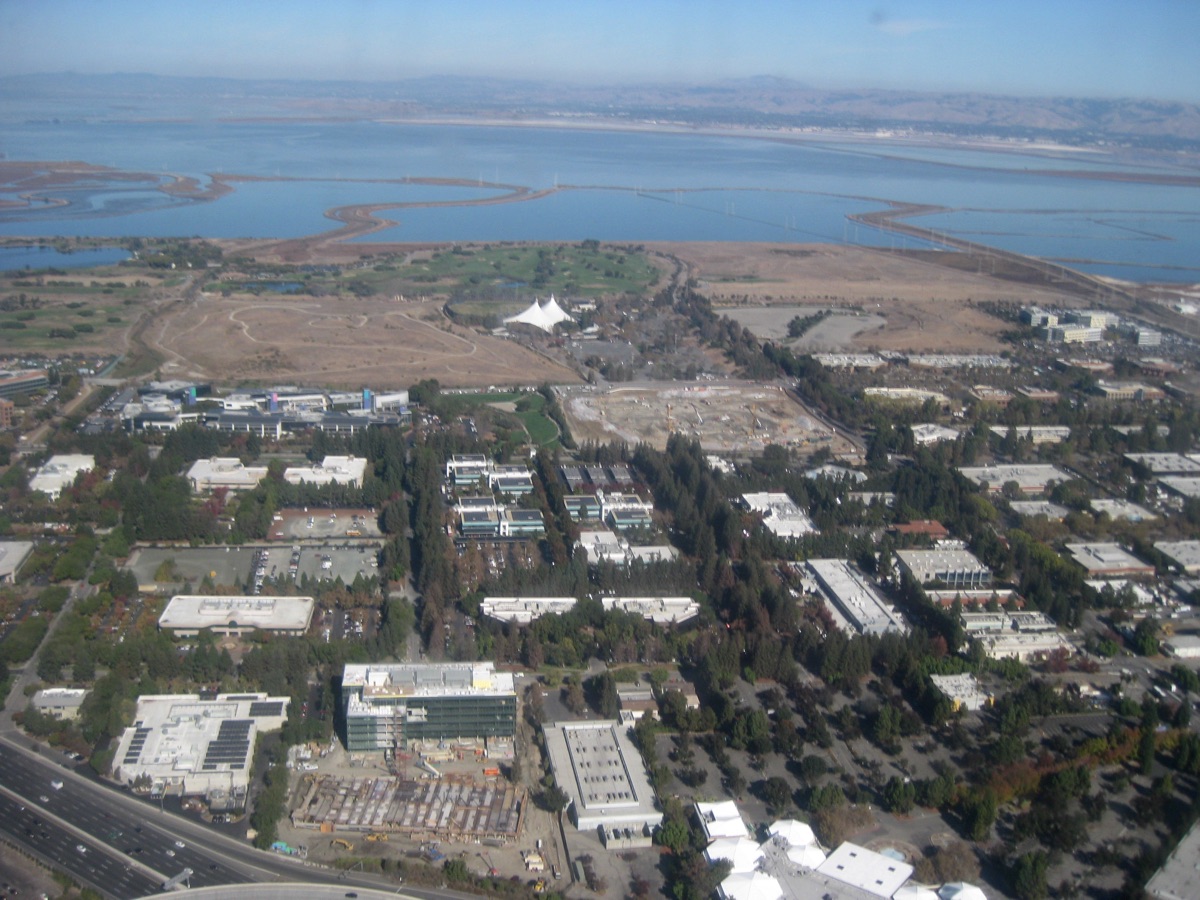
Implementation of the Community Stabilization and Fair Rent Act (CSFRA) has been weakened by a sometimes unfriendly Rental Housing Committee (RHC), which at times rejected its own legal advice. For example, the RHC voted that CSFRA rent restrictions do not apply to mobile home spaces. Nevertheless, the CSFRA protects nearly 13,500 tenant households in Mountain View against rent-gouging, and even more against unjust evictions. When the CSFRA was approved by voters in 2016, I was the only council member to support it.
In 2018, the California Apartment Association led a campaign to place a measure on the ballot to suspend the substantial provisions of the CSFRA. I labeled the initiative the “Sneaky Repeal.” Despite hundreds of thousands of dollars and lying paid signature gatherers, tenants and their allies convinced enough voters not to sign the petition to keep the proposal off the November, 2016 ballot. The measure did eventually qualify for a vote in 2020. As far as I know, the landlords’ failure in Mountain View is unprecedented.
In a region where many cities have been reluctant to add housing, Mountain View has set the standard. I have taken that message to Palo Alto, Stanford, Cupertino, and regional forums, and I have coordinated with housing activists and pro-housing elected officials throughout the Bay Area. Some cities, such as Sunnyvale, are moving forward, but as a region we have a long way to go.
Despite the challenge, I have opposed efforts, such as State Senator Scott Wiener’s state legislation, to get more housing built by taking away local control. Unless cities are able to determine where and how to build more housing, I believe such mandates will backfire. And the focus on transit-oriented development—something I support in general—is problematic in locations where transit is not available, slow, or infrequent. While I support incentives for housing development—such as the Housing Incentive Pool, which provides transportation funding to localities that build housing—I believe local organizing is a better strategy than top-down requirements. As mayor of a city that is building housing, I believe my voice was heard.
The most visible sign of our housing crisis is the presence of hundreds of oversized vehicle dwellings on our streets. Furthermore, many more households are living day to day in cars. A majority of the adults living in vehicles have jobs, and many more receive disability payments. In my re-election campaign, many voters expressed their concern about vehicle dwellers, but most of them wanted the city to find a solution, such as safe, sanctioned off-street parking. However, a vocal, intolerant minority has been demanding, in communications to Council as well as social media, that we simply outlaw overnight parking on our streets.
Not only does this raise fundamental legal issues, but I think “enforcement first” is both immoral and impractical. I have begun working with our vehicle residents to make sure that their voices and stories are heard as the new Council tackles this problem.
Transportation
Road and highway congestion, particularly during commute hours, is the flip side of the housing crisis. Many people are on the roadways because they can’t afford to live near where they work. The consequences of this traffic are frustrating and dangerous roadways, commuters detouring through neighborhoods, time wasted on commutes, and growing greenhouse gas emissions.
The principal solutions to traffic are to build housing near employment and to create complete neighborhoods so people have fewer reasons to drive. Unfortunately, it’s difficult for residential growth to keep up with our area’s booming employment.
So at the same time, Mountain View is improving traffic signals, building a reversible bus lane on Shoreline at 101, designing a new off ramp at 101 just before Shoreline, and installing traffic-calming measures on residential streets. We are working with Google to expand our “free” (Google-funded) community shuttle. Led by Council member John McAlister, we are creating a comprehensive multi-modal plan, and the Public Works Department has staffed up to implement these strategies.
Early in my Council term, I opposed the Valley Transportation Authority’s (VTA’s) expensive “Bus Rapid Transit” proposal for El Camino Real, which would have carved out a median lane for the exclusive use of express buses. As a member of VTA’s Policy Advisory Board for this project, I helped develop an alternative that would have created part-time HOV (high-occupancy vehicle) lanes on the right sides, with service articulation between local and express buses. In the end, the project was abandoned.
CalTrain is the backbone of the Peninsula’s public transit system, and Mountain View’s downtown Transit Center is the fourth busiest station—after San Francisco, San Jose, and Palo Alto—on the line. During commute hours, trains are full in both directions. In just a few years, CalTrain will be electrified, bringing more, faster, and quieter trains. Additional service would cause the crossing gates to block traffic more often at Rengstorff and Castro, so Mountain View is already conducting environmental clearance for a planned underpass at Rengstorff. At Castro we are planning to close off vehicular traffic at the tracks, connecting Evelyn to the Shoreline overpass and creating a tunnel for bicycles and pedestrians under the tracks and Central Expressway.
For the past three years I have represented Mountain View on the Local Policy Makers Group, with members from every city on the CalTrain corridor. Along with allies from other cities, I have pushed for a more systematic approach to grade separation (underpasses and overpasses at the tracks). More recently, we have urged CalTrain to adopt an electrification business plan based on the expansion of non-peak (mid-day, night, and week-end) service as well as increased service at currently underserved stops such as Mountain View’s San Antonio Station.
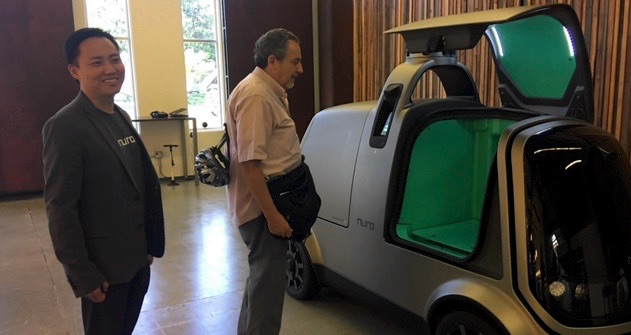
I have championed our late, former City Manager Bruce Liedstrand’s proposal for a fast transit “Link” connecting downtown to North Bayshore. The City is about to undertake a second study of transit options, to narrow the routes and select the technology. We call it the Automated Guideway, and it is expected to move quickly, elevated above street traffic. While I originally proposed a monorail, experts are telling us that autonomous buses on dedicated guideways will be more flexible and cost-effective.
Speaking of autonomous vehicles, Mountain View has emerged as the global leader in autonomous vehicle (AV) development. We are not only the home of Waymo—formerly Google’s self-driving car division—but also nearly twenty other AV businesses, many of which are spin-offs from Google/Waymo. Soon Waymo, with the blessing of the California DMV, will be operating zero-occupancy vehicles and driverless taxis in Mountain View.
The technology, based upon detailed mapping and multiple sensors on each vehicle, is impressive. I expect Waymo’s fleet to be at least as safe as human-driven taxicabs, but I believe that the regulatory framework is far behind the technology. Mountain View and its neighbors must pioneer strategies for parking, communications between autonomous vehicles and people, video privacy, etc. before self-driving cars are ubiquitous. We are already taking steps in that direction.
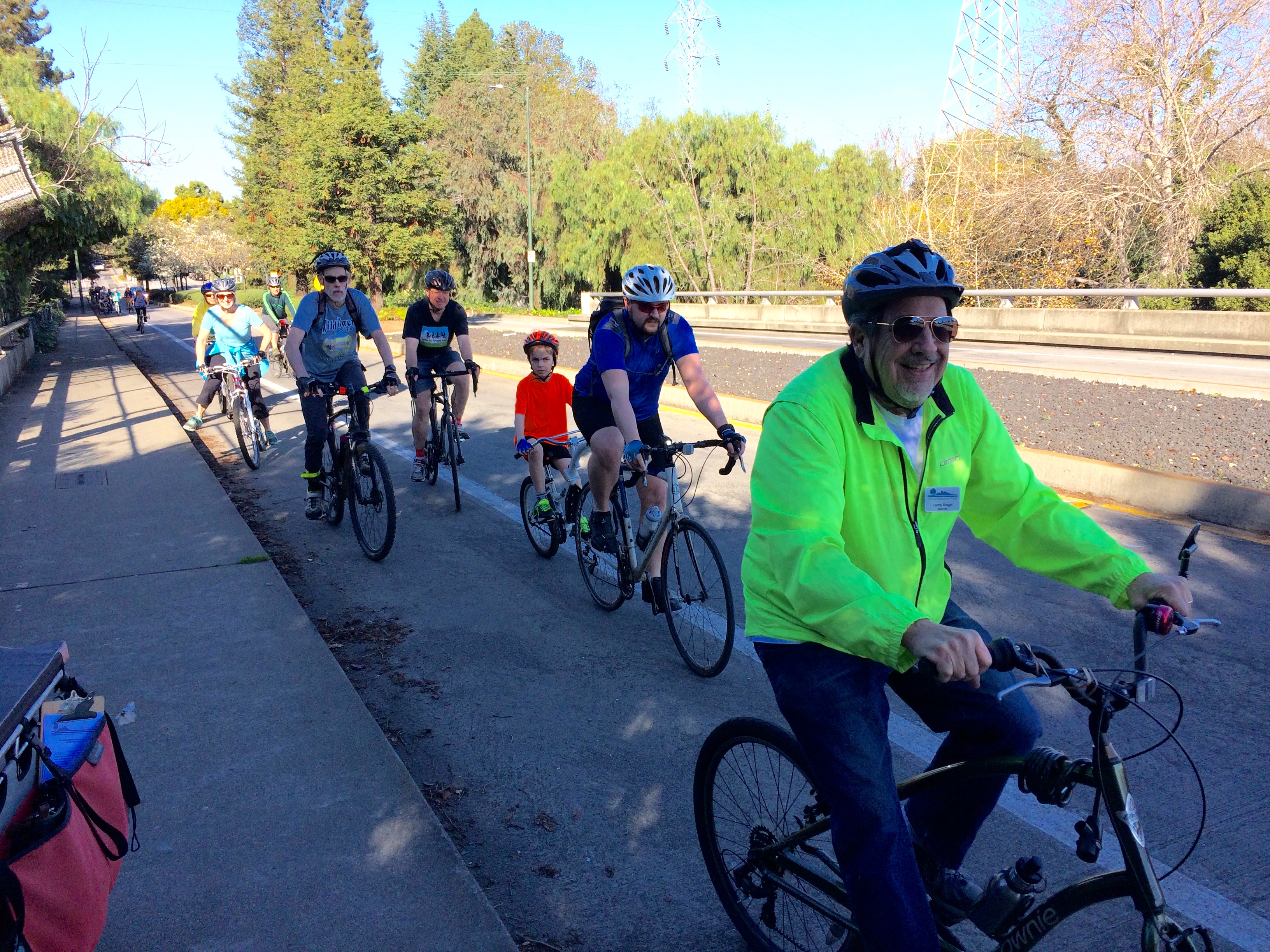
A transportation cyclist myself, I have championed the expansion of our bicycle infrastructure, but it is my hope that we can make bicycling safer and easier without punishing the majority who do not normally bicycle. Mountain View is gradually increasing our bike lane mileage, creating stretches of protected lanes on Castro Street and in North Bayshore. We have plans or visions for numerous bike/ped underpasses and overpasses, and we are improving numerous intersections. I’m still hoping that we will improve left turns for bikes, and though we have installed signage for the inter-city Peninsula Bikeway, I’m hoping that we’ll be able to construct a non-stop cycle path all the way along our CalTrain right-of-way once the vehicular grade crossings are eliminated.
Investments in transportation infrastructure are expensive, and in these troubled time we cannot rely upon the County (VTA), state, or federal government to provide the funding necessary to initiate these projects. With City Manager Dan Rich and former Mayors McAlister and Showalter, I fought to ensure that the Measure B sales tax increase, approved by Santa Clara County voters in November 2016, would benefit Mountain View and other North County and West Valley cities.
Soon after I took office in 2015, I proposed a “head tax” to fund transit at the expense of the employers whose growing ranks of employees are clogging our roads. Unlike the sales tax increase or bridge toll increase (approved by Bay Area voters in June 2018), the head tax is graduated or progressive. The bulk of the tax will be paid by large businesses, not small businesses or individual taxpayers. Placed on the November 2018 ballot by the City Council, the tax—as an update to our Business License Tax—passed with 710f the vote. I am hearing from other Bay Area municipal leaders that they too want to enact something similar. The Bay Area is afflicted by intense and growing inequalities in income and wealth, and progressive taxes are an important tool for taking that on.
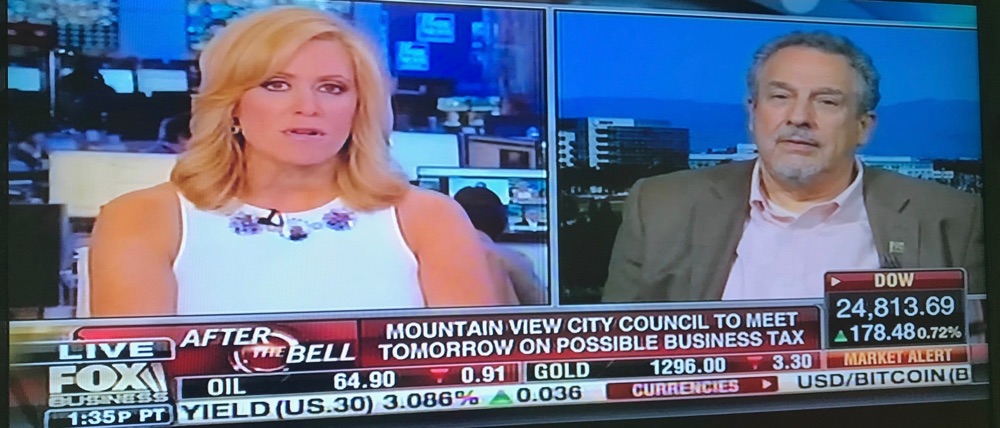
Sustainability
Mountain View’s commitment to sustainability is broad and deep with a focus on energy. Like other California communities, Mountain View takes the threat of climate change seriously. Our action plans are based on a simple concept: replace other sources of energy—in buildings and transportation—with electricity, and maximize our reliance of renewable sources of electricity.
Silicon Valley Clean Energy (SVCE), of which Mountain View is a founding member, is now fully functioning. While I have always supported it, the switchover to carbon-free electricity seemed like an incomplete solution in the absence of new renewable sources, since other customers would end up buying the fossil-fuel-generated electricity that we rejected. However, in October 2018 SVCE announced plans to build the two “largest utilityscale, solar-plus-storage projects to be built in California.” It’s a great plan, but we won’t get a greenhouse gas (GHG) credit because our electricity is already considered carbon free.
In 2018, the second incarnation of our Environmental Sustainability Task Force issued a report containing 36 recommendations across five topic areas. Perhaps more important, it reminded us that despite our plans and policies, Mountain View greenhouse gas (GHG) emissions rose 9% between 2005 and 2015, despite our goal of a 10% reduction over the same time period. Some of this is understandable. Our service population (both residential and employment) grew 37% over the same period, and some of our GHG-reducing steps will take time to make a difference.
Still, we clearly need to do more. I personally support a focus on transportation, because as the Task Force also pointed out, transportation-related emissions have risen to 600f our GHG releases. We need to sustain our efforts to make it possible for people to live near where they work, and to make people feel more comfortable using bicycles as a means of everyday transportation. We need to aggressively promote the use of electric vehicles, and we should promote ride-sharing pools to reduce driving in low-density neighborhoods difficult to serve with public transit.
Beyond transportation, we should view the immense amount of construction that is underway or planned as an opportunity to require and incentivize sustainability features in buildings. It’s cheaper and easier to design sustainability into new buildings than to retrofit. Fortunately, some of our largest employers and some of our housing-builders are leading the way.
Community for All
From the earliest days of the Trump Administration, the federal government has attempted to implement policies that threaten our community and economy. In a region where nearly two-fifths of the population is foreign-born, Trump’s anti-immigration policies are particularly onerous. The Mountain View Council has unanimously stood up against Trump, confirming that our police will not act as immigration agents. We also joined lawsuits against federal attempts to punish local governments that took such positions.
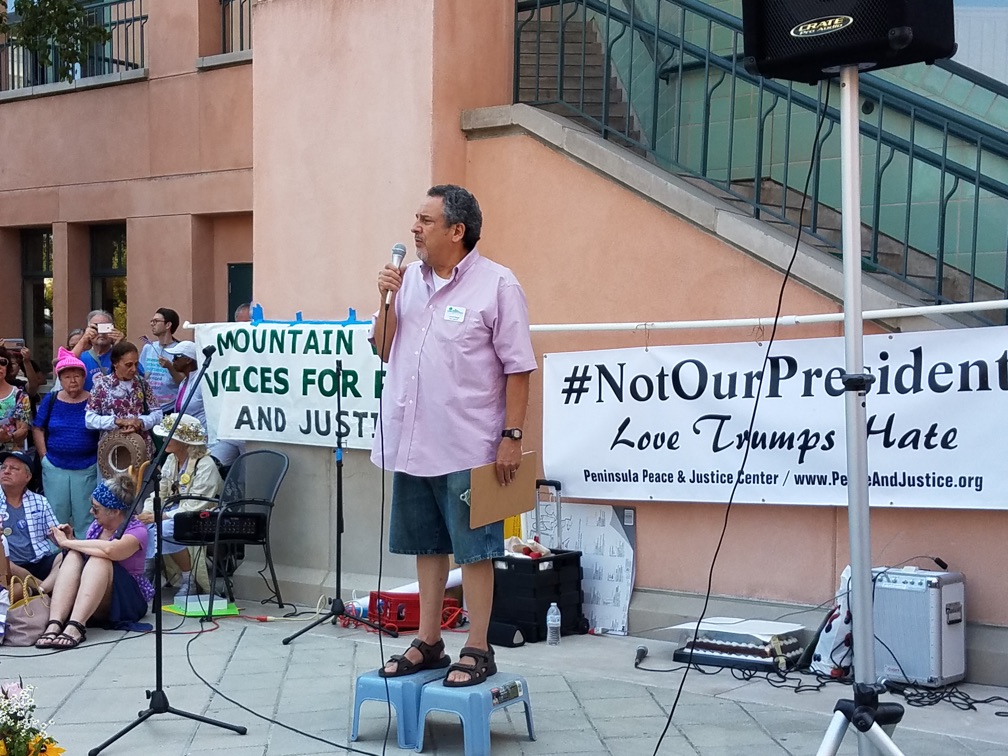
We recently awarded eleven “Community for All” grants, and we are beginning the third-year of our Spanish-Language Leadership Academy. We recently appointed two graduates of that program to city commissions.
In addition, Mountain View’s Civic Center Plaza has become a recurring venue for well-attended marches and rallies supporting diversity, equality, and immigrant rights. I was proud to be among city leaders participating in such events.
Downtown
Downtown Mountain View is recognized throughout the Peninsula for its vibrancy and success. But we are bursting at the seams, with a steady flow of development proposals designed to take advantage of that success. As the new Council considers to what degree we should update the Downtown Precise Plan, we need to re-affirm our commitment to preservation of the downtown core. As developers propose more offices downtown, we should insist that private property also be made available for housing. To make that possible, we should reduce or perhaps eliminate parking minimums for downtown residential development.
I see our Downtown Transit Center upgrade as a chance to convert a stretch of downtown Castro Street into a pedestrian mall. Throughout my tenure on the Council, numerous constituents have independently suggested the same thing. Once we re-route traffic at the railroad tracks, we will have the opportunity to eliminate north-south motor vehicle traffic between the tracks and California Street, further enhancing the downtown experience. In the meantime, I support testing a “Saturday Night Live” program. Similar to Thursday Night Live, we would close off Castro, but the city wouldn’t sponsor any organized activities.
Schools
The City’s role in K-12 education is complicated by the fact that we are served by three public school districts—the Los Altos School District, the Mountain View Whisman Elementary School District, and the Mountain View Los Altos High School District, as well as private and faith-based schools. The quality of education here is high, despite the large number of English-language learners and socially-economically disadvantaged families.
Mountain View has long shared parks with our elementary schools. We are working on a project that will supply below-market housing to both schoolteachers and city employees. But our recent population growth is beginning to strain school facilities, particularly because high land costs and the absence of vacant land make it difficult to site new schools. I personally made sure that the school districts were brought into our land use planning processes, and I worked to include language in the updated North Bayshore Precise Plan to ensure that increased property taxes from residential development there go to the schools.
But my most sustained effort, prompted by residents of the greater San Antonio neighborhood, was to clear the way for a new school and park in what is now the San Antonio Shopping Center. Our city and the Los Altos School District (LASD) have a history of uncomfortable relations, even though more than a quarter or more of LASD students live in Mountain View. In November 2016 I testified at a LASD board meeting, urging the board to work cooperatively with the city council to identify a suitable site in the San Antonio area.
The path has been slow and bumpy, but persistence paid off. City staff tailored the transfer-of-development-rights tool to help fund land acquisition, and the city promised to dedicate park fees, collected nearby, to help pay for the park. When property owners at the old Safeway site refused to sell, I encouraged LASD to approach Federal Realty, the new owner of the Kohl’s site. Unfortunately, the whole process was handicapped by the debate over which students would attend the new school. But encouraged by support from residents of the neighborhood, in one of my last substantive acts as a council member, the council voted unanimously in December 2018 to move forward with the partnership.
China
China is extremely interested in Silicon Valley. Chinese factories build our products. Chinese engineers populate Mountain View offices. Leading Chinese tech firms have set up shop here. Yet it has still surprised me how cities with populations two hundred times as large as Mountain View are intensely interested in us. We don’t have a foreign policy, but we’re on the front lines of international engagement.
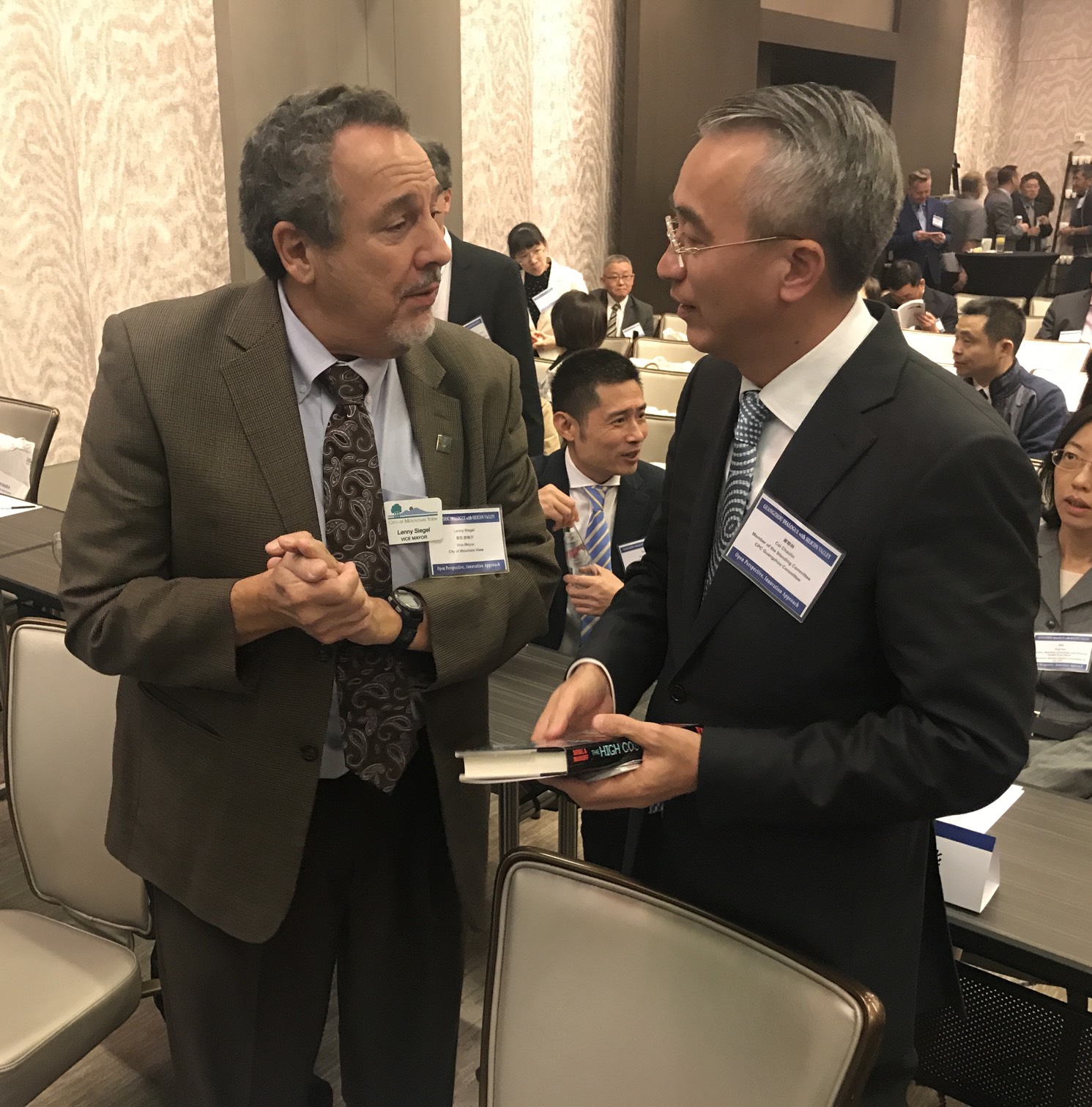
Over the past couple of years I have given three speeches to Chinese-organized meetings here and taken a busload of Chinese visitors on a tour of contaminated former Mountain View industrial sites. In March 2018 I traveled to Chengdu, Sichuan, one of the China’s burgeoning tech centers. See http://lennysiegel.users.sonic.net/web/blog/reportsto- constituents/my-trip-to-chengdu-china/.
It’s challenge, but an important one, to promote cooperation between Silicon Valley and China at a time where the Trump Administration is engaged in an ever-escalating trade war. It’s also a challenge to promote the free flow of ideas while respecting intellectual property rights. And the Chinese are uncomfortable with calls for free expression, which I consider an essential component of Silicon Valley’s commercial success. Still, since I’ve been writing about the promise and shortcomings of Silicon Valley for more than 50 years, I’ve appreciated the eager audience.
Marijuana
When I ran for office in 2014, I did not expect marijuana to become a local issue. However, with the statewide passage of Proposition 64 in 2016, permitting recreational use of marijuana, the regulation of local marijuana business was an issue we could not avoid. Though I’ve never used marijuana, I’ve always believed that prohibition was wrong and unworkable. As I said at Council, many productive, moral Mountain View residents do use marijuana, and in overwhelmingly voting for Prop 64 they signaled their desire to be able to purchase it legally. By creating legal, regulated marijuana businesses, we will improve the safety of the products and reduce associated crime all the way down the supply chain.
So I was pleased when our Council established cannabis rules in October. We are prepared to award permits to two marijuana retailers as well as two delivery businesses. A vocal minority, led by Chinese immigrants, opposed this outright, and some people have theorized that this contributed to my November defeat.
Not to Mention…
These are just some of the highlights of my four years on the City Council. Along with Sunnyvale, we’ve also adopted what may be the highest minimum wage in the U.S.: $15.65/hour. I helped initiate local efforts to reduce airport noise. I worked with residents to ensure that weekly compostable pickups don’t eliminate weekly garbage collection. We’re adding parks and community gardens. We value city employees, so we’re providing reasonable pay increases in this time of surplus. Yet we’re also saving money for “rainy days” and paying down our pension liabilities.
All in all, my service on the Mountain View City Council has been one of the most rewarding experiences in my life. I do not consider my election defeat as a refutation of the policies and principles that I espouse, because those who defeated me seem to share many of my views. I have learned, however, that major progress takes time, and that persistence pays off.
As someone who has lived in Mountain View for more than 46 years, I am not about to go away. And as someone who has organized, spoken, written, and voted for what I believe is right, for nearly my entire life, I am not about to stay silent. I intend to remain active, to help finish the work my colleagues and I started and accelerated over the past four years and to continue to speak out on local and national issues. I’m hoping that those who have worked along side me will do the same.